If you find this article helpful, please remember this was work to put together and I have animals to feed and vet
As I noted in An Morrígan and Sarah Connor: Pt. 1 Deities and Icons I had been planning before the blogosphere explosion to write a bit about how the Sarah Connor Charm School and Hooded Crow relate for me. About why I am doing both, where they meet and where they don’t. To do so was actually probably sparked when I was told that someone had proclaimed the Charm School as a Gaelic Heathen warrior group. As it was at a time I was trying to get more attention out about my Hooded Crow project, I think it was especially annoying. Of course, it would come as a big surprise to all those Christian women I work with in the Charm School, and probably Pagans of other cultural involvements.
So having reiterated that the SCCS is not a Pagan group, I shall now admit that it actually started out as a Pagan joke. And now may be responsible for this Pagan project. In fact, I’m starting to reconsider what I said that They never used Sarah Connor’s image, because I think They did quite a bit to kick me in the ass….even if none have ever copied her appearance. Because right when I needed it, there it was.
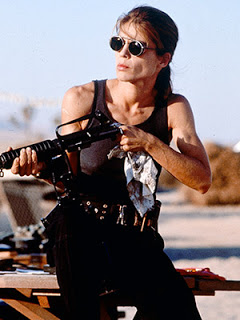 |
| It was probably this one |
Never having seen The Terminator, I didn’t pay much attention when a friend, a mentor on the warrior path, and his roommate were talking about the second movie about to come out. I seem to remember them focused on Arnie and machines. *yawn* Later that day, I was a bit surprised when I visited other friends (at the time) who were not, AFAIK, Arnie fans anymore than I was, to find that they were all excited about Terminator 2 as well. Then they showed me her photo in a magazine (remember those things? ah, yes, tell me the machines aren’t taking over, after all). Linda Hamilton, dressed in black and with all that muscle.
You know how you don’t know you were looking for something until you find it? Yeah, one of those moments. Or rather it built, I sought out the first movie, got to the new one the first chance I got. The first moment when Sarah is on the screen doing chin ups was probably when it really hit. This was something I was looking for, I just hadn’t known it.
There are people who probably do great without story and imagery to motivate and drive them. I’m not one of those people. I am very driven by story and image, I need to put things in my head to work towards. While I had found enough to get me into martial arts and physical training to be on this path I found myself on, much was rather anachronistic and much was unformed in many ways. Especially as a woman on the path, with a male mentor who had a world of images and stories through the ages he could go on but which tended to make those like me feel marginalized.
Yes, there were other strong women fictional roles before then, including Ripley of the Alien franchise. But Sarah was different, because there was a multitude of layers about here which were meaningful for me. Okay, maybe I wasn’t that paranoid about machines and I never had a kid, the latter being a strong connect for some of my friends, but pretty much everything else. Despite a fantastical story line, she was very real, very everyday. Just one of us.
The key thing was her character arch, which might be one of the best ever created in movies. Yeah, I might be bias. She was just like most of us have been at some point, directionless, working a dead end job we hated and felt inept at, not exactly winning at love. She wasn’t a warrior, she didn’t start out with knowledge of how to fight, she wasn’t granted super powers. In the first movie she is totally a Final Girl, with two notable exceptions. One is that she survived having sex, but then she does have to have this kid as it’s sort of the point. But the main one is that when the monster is finally dead, rather than sighing with relief and trying to return to a “normal life” despite the trauma, she heads south of the border pregnant, with a gun and a dog and looking for training. When she appears again she’s crazy, trained, physically strong. To the point that she, herself, may be more machine, but you can see her arch continue as her relationship with her son begins to heal in T2.
The combination of physical strength, fight training and preparedness were things I realized where intricate to making a civilian warrior. A bit of craziness might not hurt either. Because this was where I felt directionless at the time this movie came out. Obviously, I wasn’t going to be transported back to the Iron Age. I also had health issues which made being a professional warrior of any type, law enforcement, military or firefighter (which had at one time wished to do), impossible. Um, okay, I also have an issue with authority which might have gotten in the way. It helped to see the survivalist presented. And a woman at that.
Of course, there was the muscle. I was struggling with fitness, in part due to health issues (some of which got worse in the year or so before the movie came out) as well as being a scrawny hard-gainer. I was studying a martial art, which included some fitness (although probably shouldn’t…I have several issues with that now), was lifting, running. I was having problems with figuring out what to do and how to do it. I had long ditched the standard fitness advice to women, for it was (and is) about diminishing, getting smaller and weaker, not about strength. Therefore I was reading bodybuilding magazines and books, but that often left me frustrated, because of being a hard-gainer (but I did learn the term “hard-gainer”). Sarah offered more realistic physique than the bodybuilders did. Oh, still very different than I could and Linda Hamilton was not a hard-gainer, having obtained that look in a very short time. But still more real. At some point along the line I did decide to figure it out by become a personal trainer…which is it’s own twisted tale.
This was the practical side, which I don’t feel I was at all grounded in before. And which is vital to the warrior path. Which also needs to be grounded in the present day, even if the reasons we do it are in the future (and, no, probably not Skynet or Revenants, so it’s best to be ready for anything).
So I was pretty obsessed, using this story and imagery to motivate me as I continued with my growing physical training and with continuing research on Gaelic culture and religion. And now, back to how the Charm School started as a Pagan joke.
The same people who first showed me Linda/Sarah’s photo were working on a parody Pagan newsletter not long after the movie came out (or maybe even had started before, time slides). It was going to satirize various excesses of the Pagan community. I was at first trying to come up with something mocking some other folks I knew, but, well, sometimes it’s more fun to joke about yourself. And so, “Sarah Connor Charm School” and an “ad campaign” for this “warrior training program” bloomed. The parody ‘zine never happened, but the Sarah Connor Charm School remained a running joke. Which spread among many of my other friends from various circles.
As I got online, I kept referencing the joke with real life friends who already were in on it and it grew to those I “met” online. Indeed, many women had been inspired by the character in similar ways. We made up a batch of T-shirts, we discussed fitness, martial arts and self-defense, a bit of prepping..I started a LiveJournal page for it.
Meanwhile, I kept worshiping the War Goddesses, yet felt forbidden to speak Their names or talk or write much about Them, which often became uncomfortable (especially as others were not so forbidden and, well, some of the information spread was…well….). I worked within or Outside a variety of groups, started a warrior group within an organization which has fortunately written me out their history from what I understand and so will remain nameless here, tried to start up some other things which got too distracting and off my path….. I returned to the wilderness, with the internet my primary way of keeping involved in things Celtic Reconstructionist. I kept trying to build what that was, continuing my own studies and training.
In the mid-aughts, there was a big strive to get CR well defined and a group of people I was friendly with got together on that. Including the two people who first showed me “Sarah’s” photo. It was over all a stressful time in my life, my Mum died during it being at the center of my own chaos and hell. Within this group of people, there was a lot of ego clashing and underhanded ploys for control which I unfortunately got too caught up in. It was just a real clusterfuck. Then something happened among these people that was sort of “off-topic” but a major ethical and spiritual deal breaker for me, regarding oaths I had taken….and then was abused and mocked for taking a stand on. I was already sick of the ego plays, power grabs and fighting. I said “fuck it” and walked away.
Oh, some CR-types stuck with me as friends and were as disgusted as I was, of course, but I wasn’t all that active in “the movement” any longer. I even stopped at all using the term CR, although I, of course, continued to use that methodology. I kept doing my own thing, “labeled” for the syncretic tendencies of being Scottish focused and married to a Heathen, kept working with Badb, Macha and the Morrígan……but for online connections and networking I threw myself more into The Sarah Connor Charm School. It was, after all, a hell of a lot more fun than what I’d been dealing with. At a time when my life was continuing to be less fun. My Dad and several dogs and horses all died during this time period, too (all for natural causes related to age).
I started a website which I eventually got a domain for, started a Facebook page, met more and more people, especially women, who were inspired by her. Many who were not Pagan, who I probably wouldn’t have worked with on such things if I had done something Pagan focused…but also Pagans who are dedicated to other Gods or are not dedicated to particular Gods or are more ….well, there’s a lot of variety. And we talked more about fitness and training and prepping…and we developed the Honorary Degree thing where we celebrate real strong women and girls (and now boys with the John Connor Award and heroic
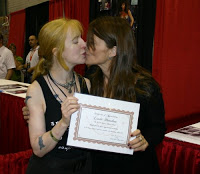 animals with Max’s First Line of Defense Heroes). I even took my ideas developed for a Pagan warrior group and removed the religious and cultural material, replacing it with basic charm school type liberal arts and with Sarah related languages (as she had trained in Central and/or South America) for the curriculum. The physical, prepping and even arts stuff was already in there. (and for all those mighty, mostly male, Pagan “warriors” who complained my ideas were too tough…we now have someone systematically using it, thank you very much!).
animals with Max’s First Line of Defense Heroes). I even took my ideas developed for a Pagan warrior group and removed the religious and cultural material, replacing it with basic charm school type liberal arts and with Sarah related languages (as she had trained in Central and/or South America) for the curriculum. The physical, prepping and even arts stuff was already in there. (and for all those mighty, mostly male, Pagan “warriors” who complained my ideas were too tough…we now have someone systematically using it, thank you very much!).
And, of course, I got to go meet Linda Hamilton and give a token of all of our appreciation.
I also cracked down on some training I hadn’t gotten to yet, having a job where I could afford it and perhaps more time and energy due to less drama. You can, of course, read about some of that here, here and here. And wrote stuff *wavesingeneraldirectionatblog* I had already included research in pop culture female action heroes, physical feminism and related topics in my studies long ago, but I got a deep focus on that during this time.
And then it happened. Writing I had put on a back burner, or really the freezer, and didn’t know what to do with I took out, heated up and started working on. Making several changes, including writing about the War Goddesses. Suddenly, it was vital that I write and talk about Them. A lot. I then put that on the back burner, but only that far, because I felt the need to work on an extensive but shorter piece. Which, when finished I suddenly found a place to submit it to. Then more possible places and more things are out in editors’ hands. And all to one degree or another related to the War Goddesses. And then I realized I needed to make the “online shrine” and change the name of this blog to match. And, of course, a FaceBook page for it the training program up, but if someone is already doing the cultural-religious stuff, then that’s already posted.
And in doing so, I have become more involved in doing things within the Pagan/Polytheist communities, but choosing where I hang out and who I do them with. Sometimes, now that I’ve been away from certain prejudices, with some association with folks I wouldn’t once have. Finding common ground where They want me to.
I think that stepping way from the drama and focusing on the Sarah Connor Charm School stuff helped clear away a lot of bullshit. It also led me to meet and learn from some really wonderful women who I might not have had the time and energy to get to know. It’s helped me move along my own path more than the work I had been doing trying to build a general CR focused “movement” which did often leave me with little energy for the warrior stuff.
So, this is exactly how these two things tie together for me. Of course, they are, I’m not big on separating parts of my life all that much. I figure Hooded Crow will always be smaller than the Charm School, given that the focus on CR methodology and one group of Goddesses combines for a less interest. Even though it’s less gender specific (SCCS has a lot of male supporters, but the “school” itself is for women…it should be realized, as I have said before, men have a lot more stories than we do already). Right now it’s mostly just my thing, anyway, while the Charm School has become a lot of women’s thing.
And if you missed it please see An Morrígan and Sarah Connor: Pt. 1 Deities and Icons part 3 is on it’s way (EDIT is now up Our Gods and Heroes in Pop Culture), I’ll be less focused on Sarah Connor (although Linda Hamilton will get a mention) and instead discuss Gaelic Gods and Heroes in pop culture, especially the Morrígan (although in general that should be “sort of”). (EDIT: also now have An Morrígan and SC: Pt. 4: Training)
copyright © Saigh Kym Lambert
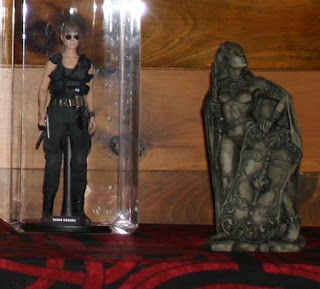
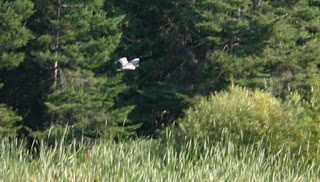 The title comes from a passage in Standish Hayes O’Grady’s translation of
The title comes from a passage in Standish Hayes O’Grady’s translation of 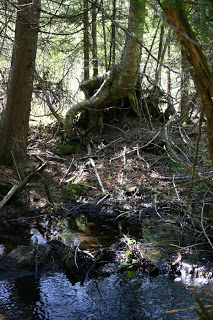 This also brings to mind the popular debate about whether Gaelic Paganism is a nature religion or not. Many other cultural Reconstructionists are much clearer that they are not, as some are very urban religions often in conflict with nature. There does seem to be some of that in the more Gaelic ways which are more mainstream and focused on the culture. The romanticism that all of Celtic religion is based in nature, rather than a defense from nature, is, well, romantic. But the Outlaws were of nature, so I can keep that romanticism all I want. Even while actually living with it, understanding why there is often a hostility to it from those who didn’t and don’t have the luxury of seeing it from afar while in their safe houses or apartments, eating food they picked up from a grocery they traveled paved roads to go to and really being separate from that nature they claim to love. Of course, some of us get very romantic about hardship even as we’re in it….some of us cal ourselves homesteaders.
This also brings to mind the popular debate about whether Gaelic Paganism is a nature religion or not. Many other cultural Reconstructionists are much clearer that they are not, as some are very urban religions often in conflict with nature. There does seem to be some of that in the more Gaelic ways which are more mainstream and focused on the culture. The romanticism that all of Celtic religion is based in nature, rather than a defense from nature, is, well, romantic. But the Outlaws were of nature, so I can keep that romanticism all I want. Even while actually living with it, understanding why there is often a hostility to it from those who didn’t and don’t have the luxury of seeing it from afar while in their safe houses or apartments, eating food they picked up from a grocery they traveled paved roads to go to and really being separate from that nature they claim to love. Of course, some of us get very romantic about hardship even as we’re in it….some of us cal ourselves homesteaders.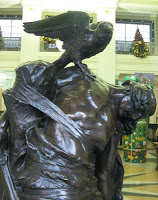
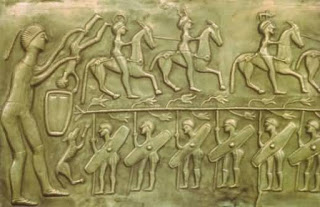
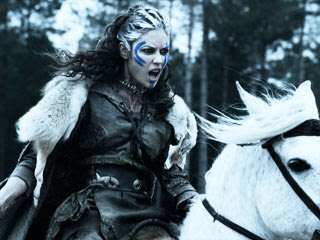
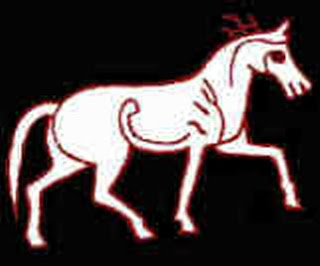
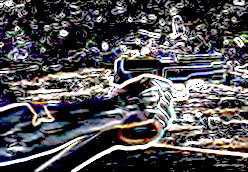
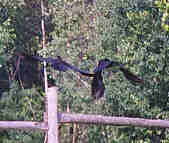
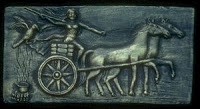 sort of a clean-up although that term was not considered particular seemly and properly Christian by the clerics either. (McCone, West) There is, of course,
sort of a clean-up although that term was not considered particular seemly and properly Christian by the clerics either. (McCone, West) There is, of course,